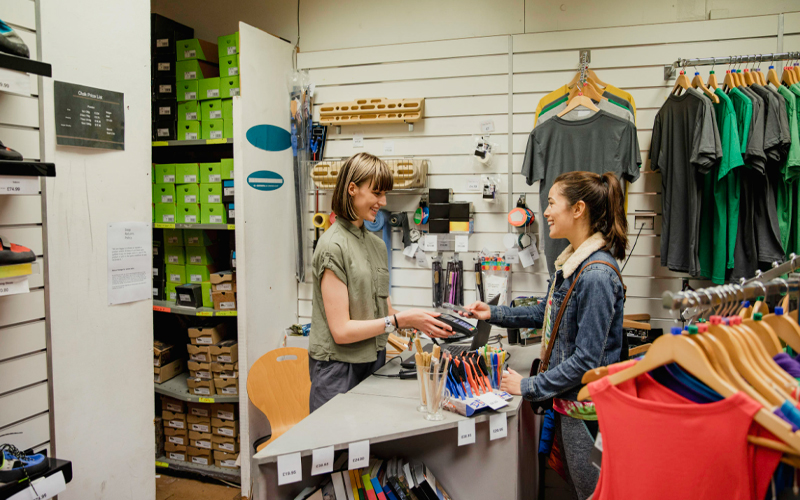Machine Learning (ML) involves teaching a computer to analyse a large quantity of data to detect relationships, and based on that build models of business processes. These models can then be used to make predictions that can help make better business decisions. ML includes a variety of approaches from using examples to teach software to detect a specific pattern to constructing ‘neural networks’ to discover new patterns that are embedded in the data. By providing feedback on its performance, the ML software can ‘learn’ from experience and continuously improve over time. ML has now been applied to many applications such as facial recognition, email spam detection, recommendations by OTT platforms and e-retailers, and medical diagnosis.
Using its power to generate predictive analytics and pattern recognition, ML has been applied in many industries, including the packaging industry, to cut costs, increase revenue, and improve customer experience. We will now look at five different ways in which ML can be applied in the packaging industry to achieve these goals—both in product packaging and in the shipment of products to consumers.
Quality control
Quality control is essential not just in making the product but also in making the package that will contain the product. The package conveys crucial information about the product, manufacturing details, and dates (in the food and pharmaceutical industries the expiry date is a critical piece of information); moreover, the design of the package should capture and keep the customer’s attention. In the highly automated processes used these days in production, strategically placed sensors and ML can rapidly detect errors in the product and packaging and even identify the sources of the errors so that they can be quickly fixed. Errors could include defects in the product, packaging, or labelling. ML-based image recognition systems have become sophisticated enough to examine even the placement of multiple items inside packages at bagging stations.
Reducing and, where possible, avoiding the shipment of incorrect or damaged products to the customer is crucial in building and maintaining consumer trust in the product and the supplier.
Package design and packing optimisation
ML applications can be trained to design the ideal packaging for a product. Many features of the product must be taken into account when designing the package—the nature, durability, and shape of the product, the potential uses of the product, and the visual appeal of the packaging to the consumer. Correspondingly there are many different materials available to make the package. In particular, these days with the increasing concern for finding environment-friendly alternatives, the ultimate disposal of the package must also be taken into account—from minimising the material used to incorporating biodegradable material. Computer simulations using ML can be used to model these multiple features, experiment with different design options, calculate the cost-benefit of different designs, and assist in choosing the optimum design for the package.
Inventory control
> As in many other industries, ML can be used in the packaging industry to analyse historical data as well as current sources of information, such as seasonal variation and customer feedback, to predict customer demand to determine the optimal level of stock to carry. Within the warehouse, combining ML with real-time data from sensors, companies can optimise the process of storing, retrieving and loading products for shipment. Companies can greatly reduce the cost of storing inventory by minimising overstocking or stock-outs.
Preventive maintenance
Packaging companies are often highly automated and depend on many machines to perform all the processes involved. To maintain a high level of performance these machines, which often have many moving parts, have to run continuously and break-downs are very expensive. This requires regular, comprehensive maintenance of these machines. With the help of embedded sensors and ML, companies can take a more proactive role with scheduled preventive maintenance to keep downtime to a minimum.
Supply chain optimisation
ML-generated predictive analytics can be used throughout the supply chain—from predicting demand, selecting suppliers, optimising production, and improving inventory management, to determining the best delivery routes. ML can also assist in planning for unexpected external disturbances to the supply chain and finding the best alternatives to dealing with these interruptions. By improving upstream and downstream communication, ML can vastly assist in critical decisions involved in supply chain management.
ML, along with other AI-related technologies such as the Internet of Things and Natural Language Processing, can be applied to improve the competitive advantage of companies. The good news is that these technologies are becoming more cost-effective, and skilled experts and cpg outsourcing consultants who can assist in implementing these tools are being increasingly employed even by SMEs.
For organizations on the digital transformation journey, agility is key in responding to a rapidly changing technology and business landscape. Now more than ever, it is crucial to deliver and exceed on organizational expectations with a robust digital mindset backed by innovation. Enabling businesses to sense, learn, respond, and evolve like a living organism, will be imperative for business excellence going forward. A comprehensive, yet modular suite of services is doing exactly that. Equipping organizations with intuitive decision-making automatically at scale, actionable insights based on real-time solutions, anytime/anywhere experience, and in-depth data visibility across functions leading to hyper-productivity, Live Enterprise is building connected organizations that are innovating collaboratively for the future.








